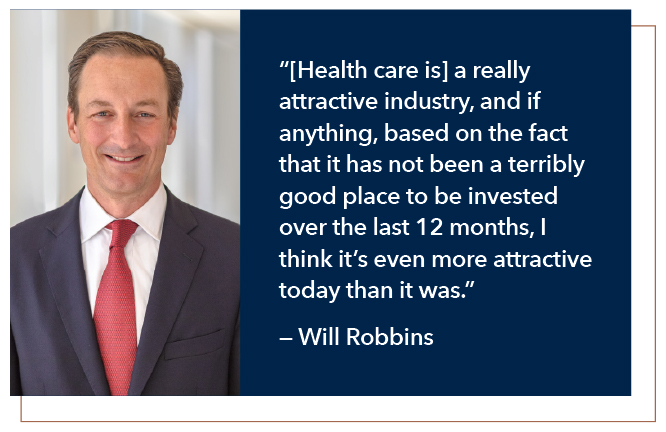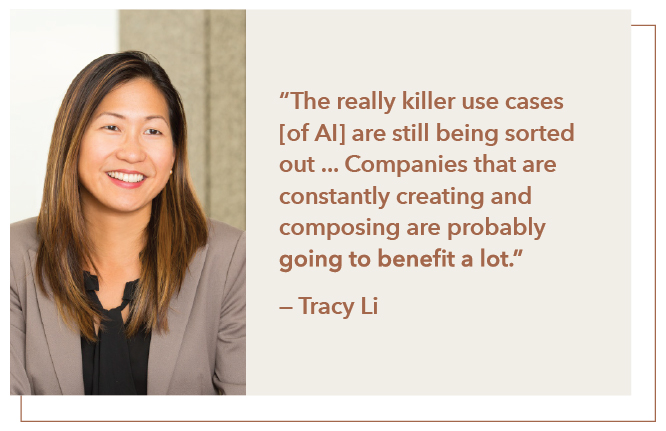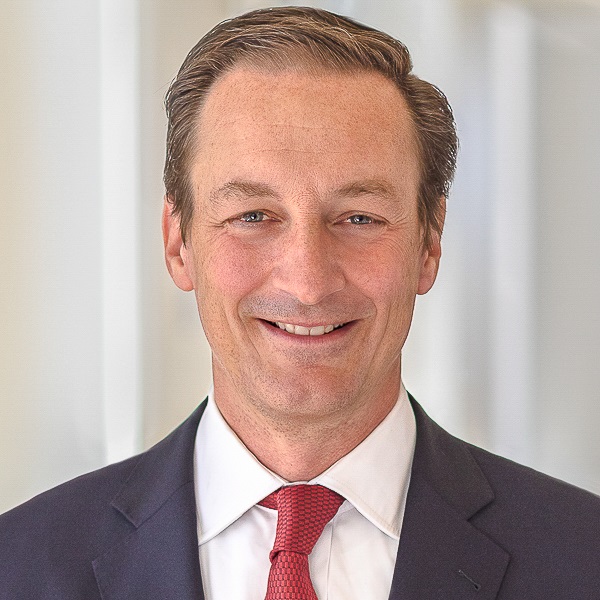Economic Indicators
Equity
Lots to be excited about this year, but lots to keep an eye on as well.
Equity investors had plenty of reasons to cheer in 2023. Indices were generous and inflation, that once seemingly undefeatable force of nature, was falling toward central banks’ targets.
Yet, as is often the case with markets and economies, there was plenty of room for interpretation. Despite the impressive finish, the stock market bounced around significantly throughout the year. The sterling returns were concentrated in a narrow band of stocks. And the final numbers would have been decidedly pedestrian had it not been for a sparkling rally in the final two months.
There are plenty of reasons for optimism in 2024, including that interest rate hikes appear to be over and the Federal Reserve may start lowering them. Still, a host of variables are looming — including a contentious U.S. presidential election — that could bring further volatility.
We sat down with Capital Group portfolio manager Will Robbins, economist Jared Franz and equity analysts Tracy Li and Isaac Sudit for a wide-ranging conversation on the economic outlook, where investment opportunities may lie and how artificial intelligence may affect the technology sector.

The year ended with a powerful rally, but that belied some of the uncertainty that marked 2023. How’d we get here, and where do you think we’re going?
Jared Franz: For now, I’m in the cautiously optimistic, no-recession camp. The difference between this period and prior instances of recessionary threats has been the labor market. It’s just fundamentally stronger than in similar periods in the past, and it’s a key reason why I think we’re going to skirt a recession this year. Compare job openings to 2019 before the pandemic. There were roughly 20%, 25% more openings at the start of the year. In other words, we still have a lot of need for workers. That said, I foresee the unemployment rate going up a little bit this year, with GDP growth staying at roughly 2.5%.
The Federal Reserve still wants inflation to come down to 2% to 2.5%, and it is trending toward 2% in 2025. My view is that the Fed will do so-called maintenance cuts, coming down from today’s 5% to 5.5% range by half a percentage point to 1 percentage point. That’s a big difference from cuts related to a recession, which have been 3 to 4 points on average. The goal wouldn’t be stimulus, but to maintain the real [inflation-adjusted] rate of 1% to 2%.
What does that imply for investors?
Franz: I think practically it means the 10-year Treasury rate is not going back down to 2%. When we talk about “higher for longer,” that’s what we’re talking about. I had to do a double take a couple of weeks ago when I looked at the 10-year rate after the pandemic. It was close to 1%! That environment is gone. We’re not going back there.
That means your mortgage, your loan for your automobile — those aren’t going back either. The cost of capital is just going to be higher. Now, we’ve seen the U.S. economy operate just fine with that type of cost of capital structure; the late ‘90s is a great example.
Will Robbins: We’ve had a lot of macro conversations over the course of time, and I’d say that 2023 was an example of why it’s important to incorporate more than just high-level themes into portfolio construction.
I’ll use this example: If you anticipated being in a higher-for-longer interest rate environment at the beginning of 2023, you probably would have avoided some of those equity securities that are more sensitive to rate hikes, like the “Magnificent Seven” stocks that were such drivers of the surge in the S&P 500. Those rebounded impressively despite the higher-for-longer environment, partly due to market expectations that rates will go lower soon.
However, I think the markets might have gotten ahead of themselves. Based on current valuations, real rates would have to decline by more than 2 percentage points to justify the valuations on the NASDAQ-100. That’s a big gap. It’s a conundrum for investors. Will equity markets see the benefits once the Fed starts to lower?
You just mentioned the “Magnificent Seven” — Google’s parent Alphabet, Amazon.com, Apple, Meta, Microsoft, Nvidia and Tesla. They defied expectations and were important contributors to returns in 2023. What set these companies apart?
Robbins: First, we should be careful about talking about the “Magnificent Seven” as a monolith. They have very different business models and very different revenue drivers. We continue to find some of them very attractive and those are significant portions of our portfolios. But others have either earnings and free-cash flow drivers that we are concerned about, or valuation metrics that simply don’t make sense to us. Tracy covers some of them.
Tracy Li: Digital media, advertising-focused companies, did very well in 2023, but in the context that they did poorly in 2022. My colleagues recently published a note that said the top five companies of 2023 contributed about half of 2022’s losses in the S&P 500. Entering 2023, those companies that I cover were trading at historically low valuations — too low relative to their prospects. There rightfully was some rebound.
In terms of what set the companies apart, to give one example, one company was facing tremendous pessimism in 2022. People were focused on headwinds, some specific to the advertising industry and some macro. But in 2023 those headwinds gave way to tailwinds. The company also became much more focused on costs, which helped drive the stock upward.
There was also a lot of doubt related to AI. Are the incumbents going to be the biggest beneficiaries of this transformational technology, or would a new startup company be? One of the companies I cover was initially an “AI loser” but it’s now perceived as an AI winner and has gotten much more expensive.
It was only a matter of time before someone brought up artificial intelligence. The technology was such a big part of 2023’s zeitgeist — does it warrant all that attention?

Li: The emerging consensus seems to be that AI is a breakthrough technology. It’s the most exciting innovation that people have seen since the internet. I was just talking to a fintech company that said it thinks it can use AI to cut customer service costs by 50%.
There are many anecdotes like this, but I think the really killer use cases are still being sorted out. The framework that I’m starting to develop is that companies that are constantly creating and composing are probably going to benefit a lot. And then, of course, there are many, many applications to transform cost structures through AI as well.
Isaac Sudit: AI is being adopted very, very quickly and it is transformative. However, I want to put that in perspective. I go back to my experience in the [late-1990s] internet bubble, and the two main lessons I pull from it are: Whatever one sees today is unlikely to be how things look in some number of years; and that somebody needs to pay for whatever future the market is pricing in.
So I start from the assumption that what we see today is not how things are going to look. Then I ask myself, what is the future that the markets are pricing in, and who pays for it? If we cannot afford that future, then elevated valuations today make no sense whatsoever.
Isaac, you cover semiconductor manufacturing. What are you seeing there?
Sudit: We’re in a cyclical decline in the industry, but let me talk about the fundamentals first. Over the last two decades, the semiconductor industry has consolidated, management teams have improved, the supply chain has been rationalized. Many companies reached record margins. And starting in 2020 with COVID, the industry experienced unprecedented growth, driven primarily by rising prices.
Typically, the industry has 3% to 5% annual price declines, but inflation and supply chain issues reversed that. There haven’t been such price increases in over 30 years, and they led these companies to record levels of revenue. Today, while pricing still remains relatively high, unit sales are now declining. We are now going through a digestion period after inventories were built out.
But the most important issue in the semiconductor industry right now is geopolitics. In many ways, the positive trends are likely going to reverse because, for the first time in over two decades, we’re going to have new competition coming from China. It’s economically irrational, but it is strategically rational, part of the escalation between Beijing and Washington. Logically, this fight over security and markets has to end in some kind of status quo, some kind of understanding. But I think the political environment is such that we should not expect any resolution this year.
China — more specifically, its economy — has recently been much weaker than many had expected. What does that imply for markets and investors?
Franz: Some of my fellow Capital Group economists have written a lot about this. We could see a structurally slower China, not for the next month but for the next decade. So 2% annual growth. And because European exports, especially from Germany, are more linked to China than those from the U.S., that could mean a slower Europe. The U.S. isn’t going to be shipping as many goods to those economies. However, it also means a lower inflationary impulse because you won’t have China driving up the prices of copper and other commodities.
Could the U.S. grow structurally faster than China for the next decade? Possibly. Quite possibly. Circumstances might mean fewer exports, but the U.S. is an innovation powerhouse. It’s home to the Googles and Microsofts and Metas of the world, so it has other drivers of growth. It’s even growing faster than places like Brazil. There’s no reason why a $26 trillion economy like the U.S. should be growing faster than a $2 trillion one like Brazil, but the U.S. is ahead in many measures of economic activity. It’s a shining star on the hill, except for some fiscal issues, which seem to be the only nick in its armor right now.
Are you referring to the effect of rising interest rates on U.S. debt?
Franz: Yes, it’s worrisome. The trajectory of the budget through 2040 that the Congressional Budget Office publishes every year has been on an unsustainable track for the last decade. And that’s usually a best case scenario. We’re going to get recessions eventually, which always add to the deficit. No one anticipated the pandemic. It’s been worrisome, it will continue to be worrisome.
I’m not totally confident that we’re going to meaningfully control the deficits going forward, whether through a Simpson-Bowles-type committee to reduce spending, or raising taxes, or some other means. It’s possible; I just don’t think it’s going to happen.
I think the U.S. is implicitly relying on economic growth. Yes, the interest expense is big and continues to grow. But I think the assumption here is that $26 trillion growing at 2% or 3% per year, in a sustainable and structural way, can outpace that. I personally think it’s a pretty weak argument because a lot of those assumptions can change — governments change, they can spend more.
With all that groundwork laid, are there any spaces in which you see opportunity?
Robbins: You’ve heard me say in events like this in prior years that I think health care is undergoing a golden age of drug discovery, in part led by ease of storage, access and analysis of data. And we’re seeing some indications that there are attractive pipelines as a result of that. We recently had the head of AI for a major European drug company come through and talk about how it’s accelerating their drug discovery process. It’s incredibly impressive, hopeful and — we think — value-producing over time.
GLP-1s, which are new weight-loss drugs, have clearly benefited a select number of companies in a meaningful way. They’ve been exceedingly good stocks.
A few things worked against the health care sector last year. Some of the larger, more established pharma companies had pipeline failures or at least did not meet expectations with respect to bringing new pipeline discoveries to market. The medical device sector saw some weakness, as hospital staffing combined with the hangover of COVID led to some delays in device utilization. And while GLP-1s benefited some companies, there’s the expectation that elective procedures could see lower growth as lower obesity rates lead to better health in the general population.
I still think it’s a really attractive industry, and if anything, based on the fact that it has not been a terribly good place to be invested over the last 12 months, I think it’s even more attractive today than it was.

 Will Robbins
Will Robbins
 Tracy Li
Tracy Li
 Jared Franz
Jared Franz
 Isaac Sudit
Isaac Sudit